Agility in Farm Management
 Print This Post
Print This Post
By Hakeem Holmes, NCAT Sustainable Agriculture Specialist
Let’s face it, farming isn’t for the faint of heart. It’s a profession where your best-laid plans can be upended by a sudden frost, a supply chain interruption, or a shift in consumer demand. So, how do you not just survive but actually flourish in this dynamic environment? The answer lies in cultivating agility – that crucial ability to quickly adapt and realign your farm’s strategies in response to the unpredictable forces that shape our industry. Think of it as your farm’s superpower, allowing you to turn potential setbacks into stepping stones for success.
In an agribusiness management context, agility can be defined as the ability for a farm to change priorities to maximize profit gain or minimize profit loss when the industry is influenced by forces outside of the farm owner’s control. For farmers who have done strategic planning and have performed a SWOT analysis (analyzing your Strengths, Weaknesses, Opportunities, and Threats), your ability to take advantage of opportunities and limit the effect of threats determines your farm’s agility. In this blog, we will look at some best practices for improving short-term agility:
Tactical Sensing: The ability to quickly perceive and interpret immediate changes in the farm’s environment.
- Scenario: A sudden, localized heavy rainfall is predicted for one specific field on the farm, while the rest of the area is expected to remain dry.
- Agility in Action: A farmer with strong tactical sensing, perhaps through real-time weather apps, soil moisture sensors, or even just keen observation of approaching cloud formations, can rapidly decide to postpone irrigation in that specific field, move equipment to drier areas to continue work, or even deploy temporary drainage solutions proactively to prevent waterlogging. This prevents wasted resources and potential crop damage.
Pre-Staged Resources: Having essential materials and equipment readily available in anticipation of potential needs.
- Scenario: An unexpected early frost is forecasted for the coming night, threatening sensitive crops.
- Agility in Action: A farmer who has pre-staged frost blankets, portable heaters, or even a readily available crew to deploy these measures quickly can significantly reduce or eliminate frost damage. Waiting to order supplies or gather equipment after the warning is issued would likely be too late.
Competency Awareness: A clear understanding of the skills and limitations of the farm team and readily available external support.
- Scenario: A critical piece of harvesting equipment breaks down during peak season, threatening timely crop collection.
- Agility in Action: A farmer with good competency awareness knows which team members have the mechanical skills to attempt a quick fix. They also have a readily accessible list of local mechanics or dealerships with after-hours service they can call immediately. This targeted response minimizes downtime compared to a disorganized scramble for help.
Rapid Financial Response: The ability to quickly access and allocate funds to address unforeseen challenges or seize immediate opportunities.
- Scenario: A neighboring farm suddenly offers a short-term lease on an adjacent field at a reasonable price, presenting an opportunity to expand production to meet current market demand.
- Agility in Action: A farmer with established lines of credit, readily available savings, or the ability to quickly secure a small loan can capitalize on this opportunity without lengthy approval processes. A slow financial response could mean missing out on the advantageous lease.
Flexible Communication: The capacity to quickly and effectively share information and coordinate actions among the farm team and relevant external parties.
- Scenario: A pest infestation is discovered in a specific section of the orchard, requiring immediate and coordinated treatment.
- Agility in Action: A farmer with flexible communication systems, such as two-way radios, group messaging apps, or clear protocols for reporting issues, can quickly inform the relevant team members about the location and severity of the infestation and coordinate the application of pesticides or other control measures efficiently. Effective communication helps contain the problem and prevents it from escalating.
Mobility: The ability to quickly move personnel, equipment, and resources to where they are needed most on the farm.
- Scenario: A popular local farmers market, where the farmer typically sells a significant portion of their freshly harvested heirloom tomatoes and specialty peppers, suddenly announces a last-minute change of venue due to unforeseen construction at their usual location. The new location is further away and has a slightly different layout for vendor stalls.
- Agility in Action: The farm has a reliable and appropriately sized vehicle (perhaps a van or a small truck) that is well-maintained and ready to go. This allows them to quickly pack up their harvested produce, display equipment (tables, signage, etc.), and transport everything to the new market location without significant delays.
Quick-Change Capability: The ability to rapidly reconfigure equipment, adjust processes, or shift tasks in response to changing conditions.
- Scenario: A farmer has dedicated the morning to transplanting delicate heirloom tomato seedlings into their main growing beds. The weather forecast had predicted a mild, sunny day. However, around mid-morning, dark clouds roll in unexpectedly, and a flash flood warning is issued for the county, with heavy rain and potential hail expected within the hour.
- Agility in Action: If the crew have row covers or low tunnels readily available, they can quickly deploy these over the newly planted beds to shield them from hail and excessive rain.
As you navigate the daily ebb and flow of the agricultural world, remember that short-term agility is your powerful ally. It’s about having the nimbleness to make those crucial in-the-moment decisions that safeguard your farm’s immediate well-being and allow you to capitalize on timely opportunities. But the journey doesn’t end here. In an upcoming blog, we’ll shift our focus to the horizon, exploring how long-term agility and strategic planning lay the foundation for lasting prosperity in the ever-evolving landscape of farming.

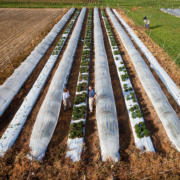
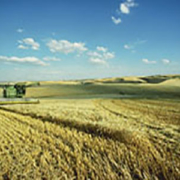 USDA
USDA
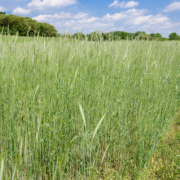

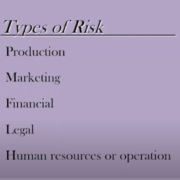
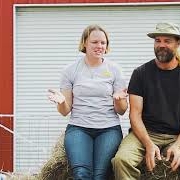
 USDA
USDA

